Live Chat: Hispanic Plant-Based Food Traditions with Sylvia Melendez Klinger
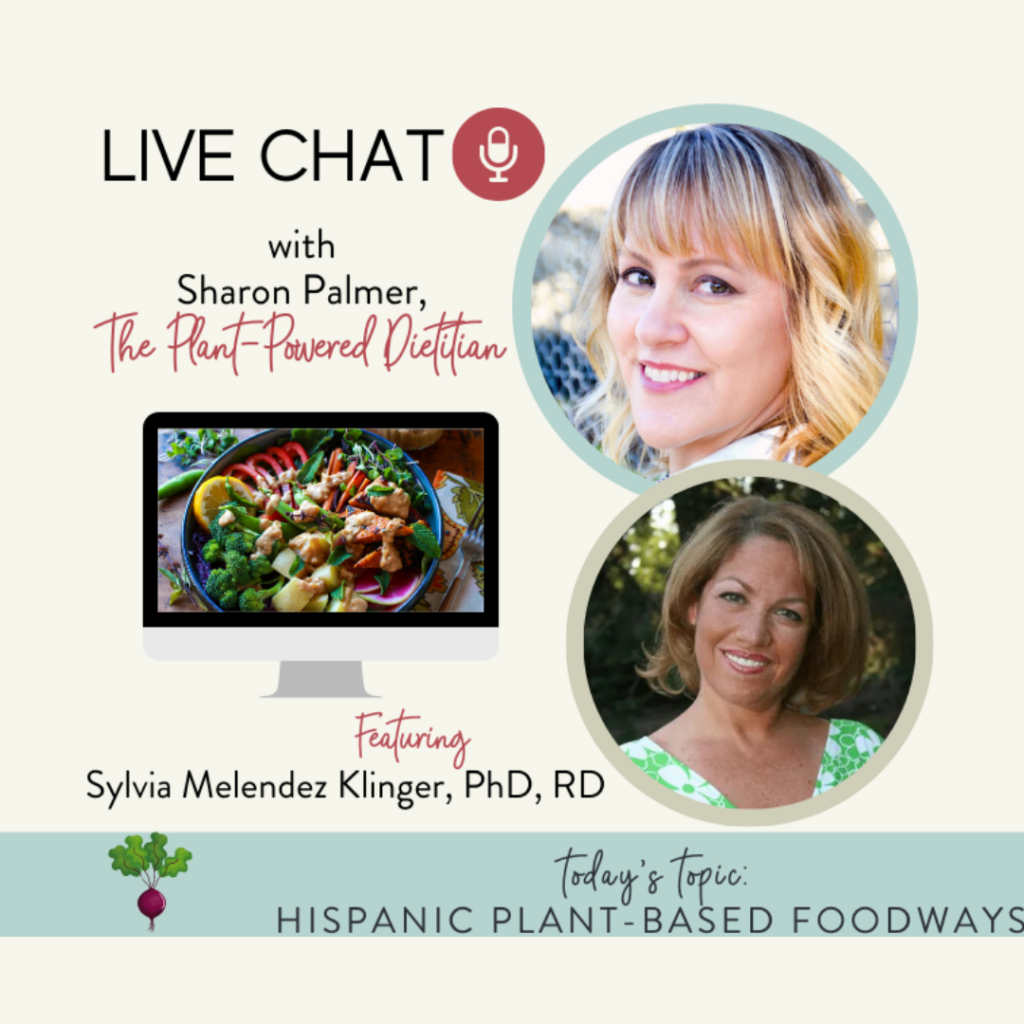
Sharon shares a live video chat with Hispanic food and nutrition expert, Sylvia Melendez Klinger, as they talk about celebrating the Hispanic plant-based food traditions in Latin American foodways.
Beautiful, vibrant Hispanic cuisine has always been steeped in plant-based food traditions. Indeed, many of Latin American’s most iconic dishes center around delicious plant-based ingredients, such as rice, beans, fruits, vegetables, herbs, and spices…and the list goes on! Hispanic cuisine is very diverse and culinary traditions vary from region to region. For example, the very popular dish mofongo from Puerto Rico (pictured above) incorporates mashed plantains cooked in olive oil and seasonings served with a flavorful sauce. Some of my favorite classic Mexican dishes include those based on corn, beans, rice, vegetables, spices and herbs, such as enchiladas, mole, and fajitas. While I am no true expert in Hispanic foodways, I heartily celebrate these food traditions and include numerous plant-based dishes inspired by these food cultures on my blog–some of my favorites include my jackfruit black bean tacos, spicy lentil tacos, quinoa corn bean chowder, and tortilla soup. Hispanic food culture features a variety of diverse plant foods that not only look good on your plate and taste good but are really healthy too.

That’s why I am just so thrilled to sit down with my friend, colleague, and award-winning author and global nutrition entrepreneur Dr. Sylvia Klinger DBA, MS, RDN, LDN, CPT, where we discussed so many of the beautiful plant-based food traditions all over Latin America in our live video chat. Sylvia is the founder and president of Hispanic Food Communications, a nutrition communications and culinary consulting company that offers nutrition and culinary consulting, cultural insights, and full-service communications support for sales and marketing efforts, including articles, social media, and web content.
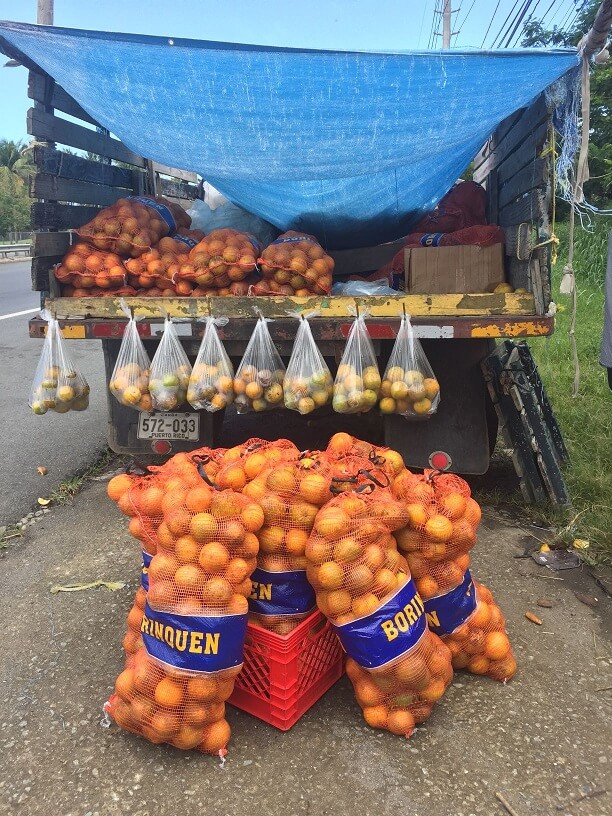
Things You Will Learn in This Episode:
- Plant-based foods that are central to Hispanic food traditions
- Foundations of Hispanic food traditions
- Understanding of the health benefits of traditional Hispanic foodways
- How to celebrate delicious, vibrant Hispanic foods within a healthful diet pattern.
- How to honor traditional Hispanic eating patterns in Western diets.
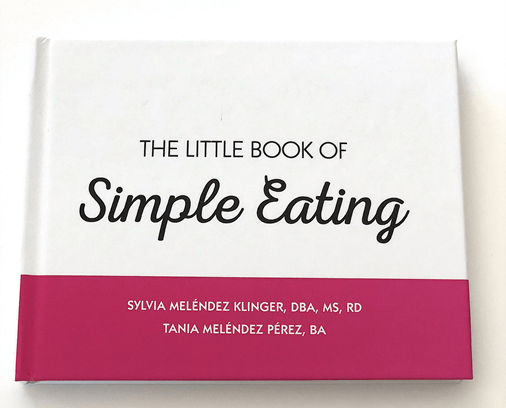
Sylvia’s Top Resources on Hispanic Nutrition
- The Little Book of Simple Eating: Aims to get people excited about making a healthy life their first choice. Offers advice that you can find very beneficial at any stage of life and ways on how to integrate new positive habits in the kitchen.
- Hispanic Family Nutrition: Complete Counseling Kit (eBook): An electronic toolkit designed to help RDNs treat Hispanic patients more effectively through a better understanding of Hispanic culture, family dynamics, and foods.
- Sylvia Klinger’s Website.

Check out the written interview of our live chat below.
Celebrating Plant-Based Hispanic Food Traditions with Sylvia Melendez Klinger and Sharon Palmer
Sharon: How did you get started down the path to becoming a dietitian?
Sylvia: Becoming a dietitian wasn’t in my radius at all, I never really liked the kitchen that much. When I was in high school, my school started a vocational in nutrition and my best friend participated in that and took a nutrition class, while I was on a different pathway to go into dental school. She started showing me menus, cookies they were baking, and analyzing calories, and somehow a lightbulb went on inside my head! And I was like “that is a really cool thing”. I immediately went home and told my mom I wanted to become a dietitian, I was about 14 years old and never looked back. When I graduated, the program was launched by Loma Linda University in Mexico and got transferred to Loma Linda University to continue into my 4 year degree. It was a love affair from that moment that has never turned off.
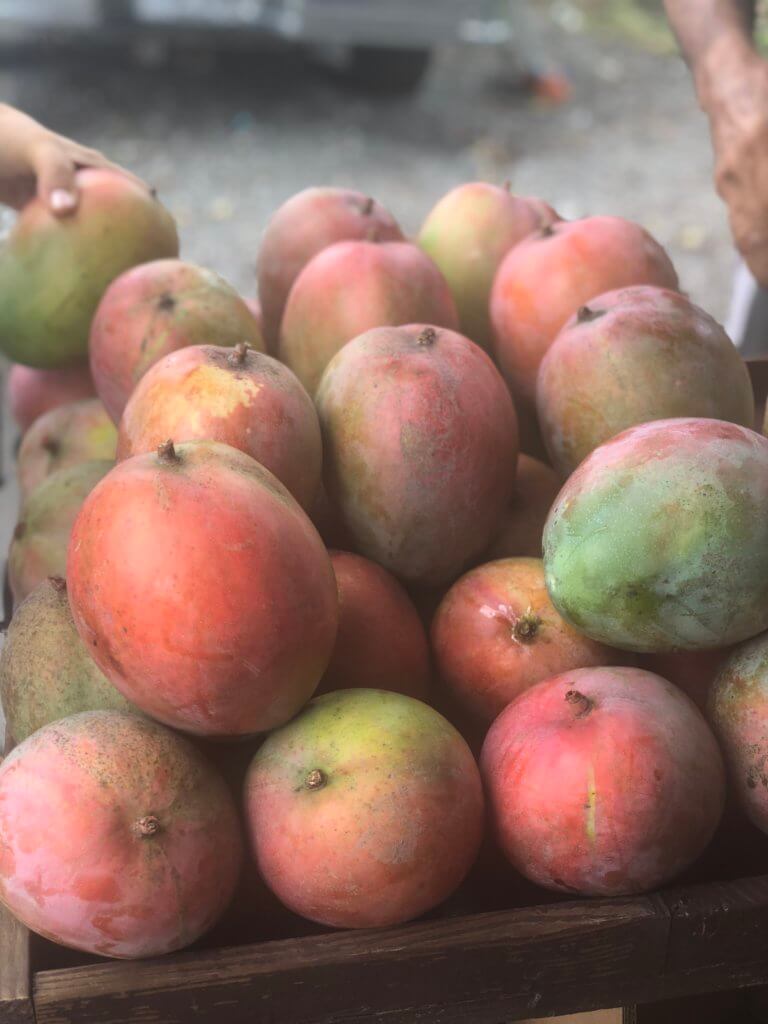
Sharon: Can you tell us a little about your food culture and traditions?
Sylvia: It started with my grandma living with us, I remember her making bread in the kitchen and chopping different foods. What I really love about Hispanic foods, is that it really gathers alot of people together in the kitchen. It’s not a one person affair, for example it was my brother helping, my cousins, my father, everybody had a job in the kitchen because you’re feeding so many people. Even though I was born in Puerto Rico, my family and I moved to Mexico when I was 7 years old, and I remember my friends making tortillas by hand and salsas everyday, and the next thing we know, we had a banquet set up. I think Puerto Rican food has great flavors, like. the sofritos, but Mmexican cuisine is known all around the world.
Sharon: Could you tell us more about these aspects of color, texture, and some of those flavor combinations?
Sylvia: Now that I’m older and I do food photography, I’m so in tune about the color combinations and texture in the plate, but back then it just came together so naturally. For example, look at salsa, it’s so simple, it has tomatoes, cilantro, lime juice, onions, chili, and look how beautiful it is. Or when you add a vegetable with some herbs and some citrus juices, it automatically forms into a “wow effect”. Also for example, kids snack on jicama, mango, cucumbers, and carrot slices with chili powder and lemon juice, and you’ll see this in California because the Hispanic population in California has brought it up and I love that. Sometimes the most classic and fastest foods are good for you and that’s my goal with the Hispanic population. I say ”just keep doing what you’ve been doing all your life and you’ll benefit from the nutrients from those foods you’re already accustomed to eating”. I also tell the main population here in the U.S. to infuse some of those flavors into their cuisine because it’s going to make their food so much tastier, look better, and the texture will be amazing.
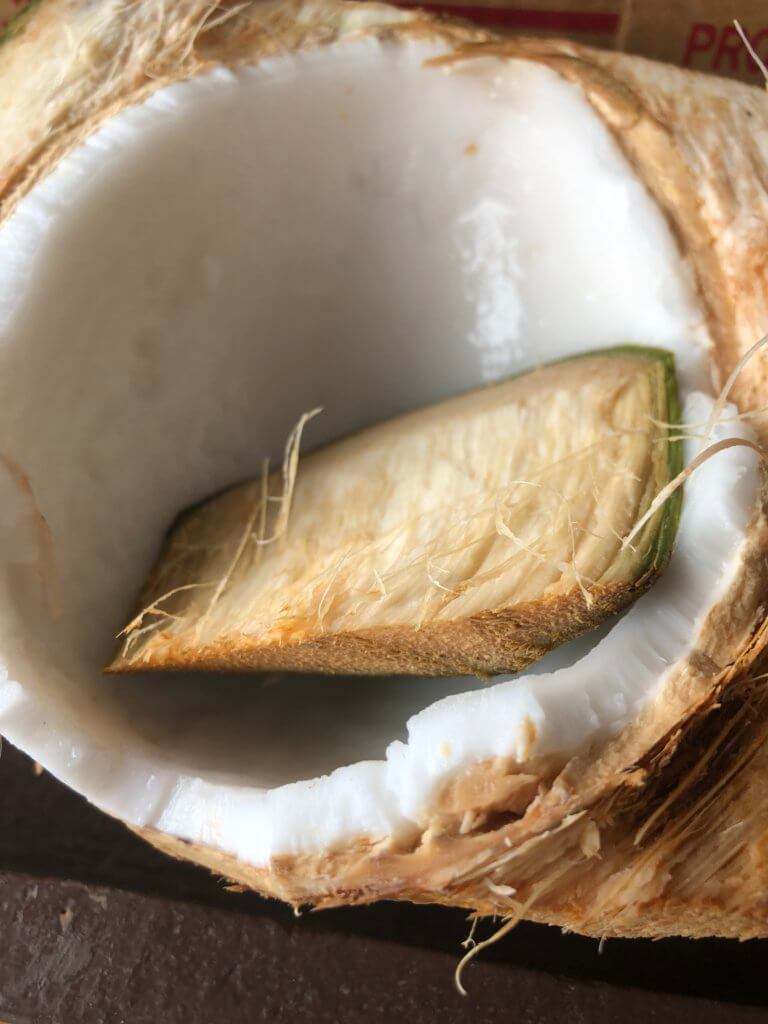
Sharon: Can you give some examples of some plant-based dishes that are part of the Hispanic food traditions to help inspire our cooking, and the people who are interested in plant-based eating?
Sylvia: A very interesting point is that if people don’t have a lot of money, they tend to gravitate more towards plant-based, especially because we can grow them in our backyards, it’s an abundance in some of our countries, it’s more affordable, for example buying bananas is cheaper than buying a piece of steak. Meat in our generation was very limited because of the price, so we were living on fruits and vegetables and learned how to spice them really well. Now, when people have more money, they think “now I need to buy more steak” and that shouldn’t be the case. When you look at the plate, half of it calls for fruit and vegetables and only a quarter for protein. I think people sometimes get scared because when they think of plant-based they only think of salads, but that’s not that case. Plant-based eating can mean eating a bowl filled with grains, fruits, vegetables and all this great stuff. With spices, I really think they are the key, especially with vegetables since so many people don’t like them. In the Hispanic cuisine, for example in Puerto Rico, you have sofritos that really help add flavor to different dishes. We also have an adobo spice blend, which incorporates different spices like garlic powder, cumin, pepper, and salt, and it’s used to season meats and vegetables. In Mexican cuisine, we have an abundance of seasonings. We started with cilantro, and different types of chilis, but we also have a lot of herbs.
Sharon: Can you tell us a little bit more about the root vegetables used in the Hispanic culture?
Sylvia: I think the Cubans have really mastered how to cook with root vegetables, and I think boiling them is what they do. We have a really popular dish in Puerto Rico where we boil all of them together (the plantains, yucca, malanga, sweet potatoes), a little olive oil and that’s it.

Sharon: How do you put into perspective how we perceive Hispanic foods in the United States and how to return to these healthy more traditional foods you’ve been talking about?
Sylvia: That’s something that we struggle with a lot because in the past we used to put a lot of these foods in stew or steam them due to lack of equipment, but now it’s a lot about deep-frying foods. When we move to the U.S., we want to deep-fry the tortillas or add excess oil to dishes. Think about an enchilada, they usually deep fry the tortilla or when they make tamales, they fry the meat before it goes inside the tamale and I sometimes think “do we really need to do that step?”
Sharon: I also wanted to ask you about some of the special foods in Hispanic traditions, especially when it comes to plant-based foods that we can get inspired by?
Sylvia: I always say you can always substitute! For example, most people eat an empanada filled with meat. You can substitute the meat for tempeh or different vegetable combinations that can go inside, and I find them to be even more delicious than the meat filling. In Argentina, their most popular empanada is filled with corn. Some of these dishes we think about that can only have meat, their originals were basically made with vegetable fillings, such as chiles rellenos can be filled with vegetables.
Sylvia shares one of her favorite plant-based Puerto Rican dishes below.
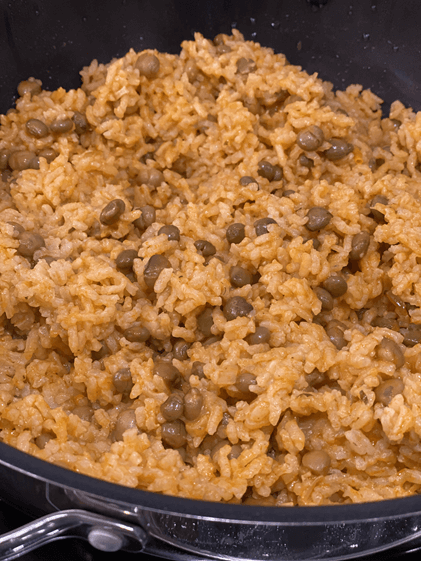
Rice with Pigeon Peas (“Arroz con Gandules”)
2 tablespoons annatto oil or vegetable oil
½ cup sofrito
2 tablespoons tomato paste
¼ cup cilantro, chopped
2 cups white rice, uncooked
1 cup tomato sauce
3 + cups water
1 teaspoon salt
1 can green pigeon peas (gandules verdes) or 2 cups fresh pigeon peas, cooked
Preparation:
- In a medium saucepan, add annatto oil, sofrito, tomato paste, cilantro and cook at medium heat for 2 to 3 minutes.
- Stir in rice, tomato sauce, water, salt and pigeon peas. Boil for 10 to 15 minutes or until water is absorbed. Cover and cook at a lower temperature for 15 to 20 minutes or until rice is tender. Stir 2 or 3 times during the cooking to allow for uniform cooking.
Servings: 5 cups

About Sylvia Klinger
Dr. Sylvia Klinger DBA, MS, RD, LDN, CPT is an internationally recognized nutrition expert who is relentlessly passionate about helping people fall in love with the process of creating and enjoying delicious and nutritious foods. As a food and nutrition communications professional, she is a global nutrition professor, award-winning author and the founder of Hispanic Food Communications.Her Hispanic background fuels her passion for nutrition, leading her to empower and encourage those in her community through the foods they enjoy in their kitchens. At the same time, she understands everyone’s needs are different and seeks to individualize nutrition to best fit each person and their journey to a happy and healthy life. Her latest publication, The Little Book of Simple Eating, was published in 2018 in both Spanish and English. In her spare time, Dr. Klinger explores food and culture all over the world with her family, realizing the power a healthy lifestyle has to glue people together.
Check out Sharon’s blog on Plant-Based Eating in Puerto Rico here.
For more live chats with food experts, check out the following:


